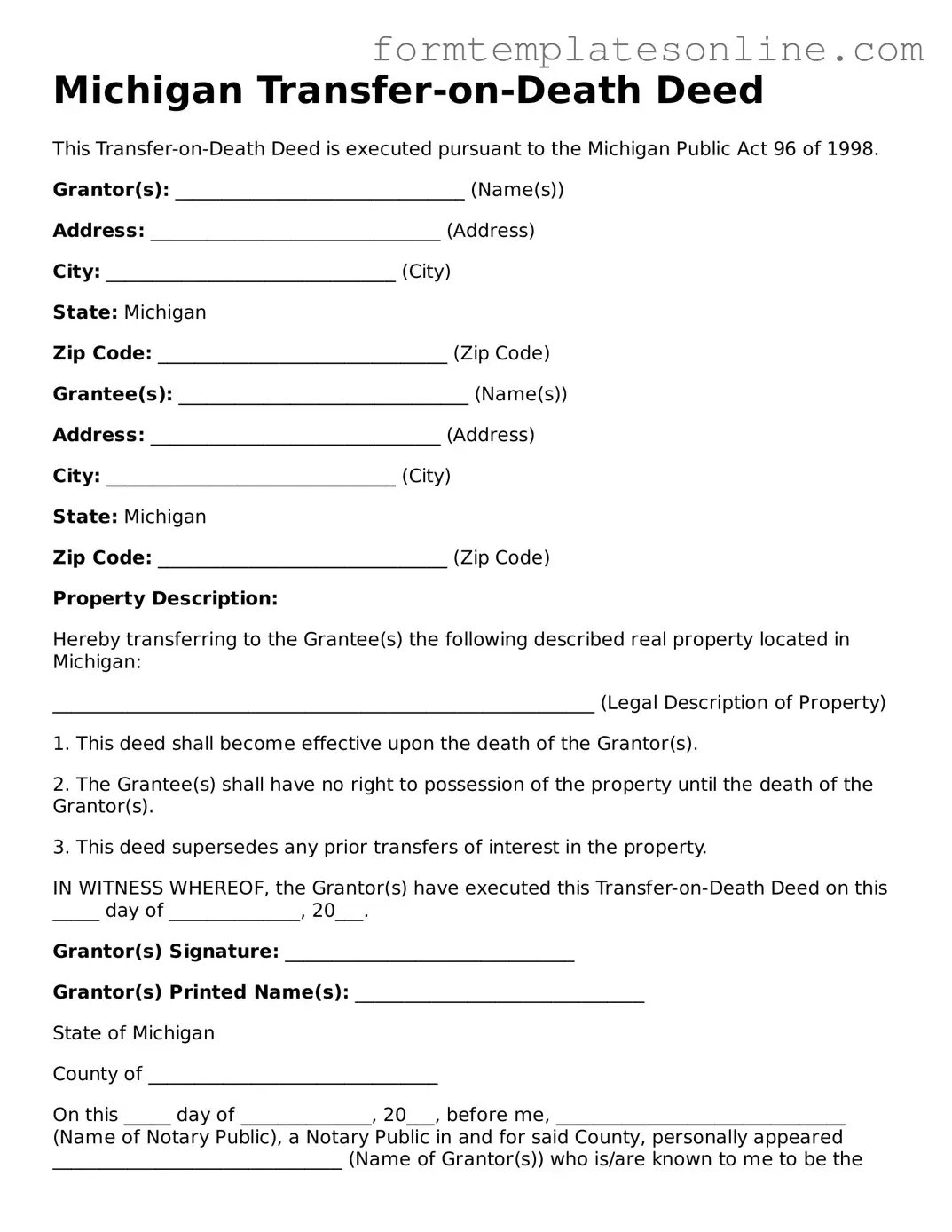Michigan Transfer-on-Death Deed
This Transfer-on-Death Deed is executed pursuant to the Michigan Public Act 96 of 1998.
Grantor(s): _______________________________ (Name(s))
Address: _______________________________ (Address)
City: _______________________________ (City)
State: Michigan
Zip Code: _______________________________ (Zip Code)
Grantee(s): _______________________________ (Name(s))
Address: _______________________________ (Address)
City: _______________________________ (City)
State: Michigan
Zip Code: _______________________________ (Zip Code)
Property Description:
Hereby transferring to the Grantee(s) the following described real property located in Michigan:
__________________________________________________________ (Legal Description of Property)
1. This deed shall become effective upon the death of the Grantor(s).
2. The Grantee(s) shall have no right to possession of the property until the death of the Grantor(s).
3. This deed supersedes any prior transfers of interest in the property.
IN WITNESS WHEREOF, the Grantor(s) have executed this Transfer-on-Death Deed on this _____ day of ______________, 20___.
Grantor(s) Signature: _______________________________
Grantor(s) Printed Name(s): _______________________________
State of Michigan
County of _______________________________
On this _____ day of ______________, 20___, before me, _______________________________ (Name of Notary Public), a Notary Public in and for said County, personally appeared _______________________________ (Name of Grantor(s)) who is/are known to me to be the person(s) described in and who executed the within instrument and acknowledged that they executed the same as their free act and deed.
Notary Public Signature: _______________________________
My Commission Expires: _______________________________
